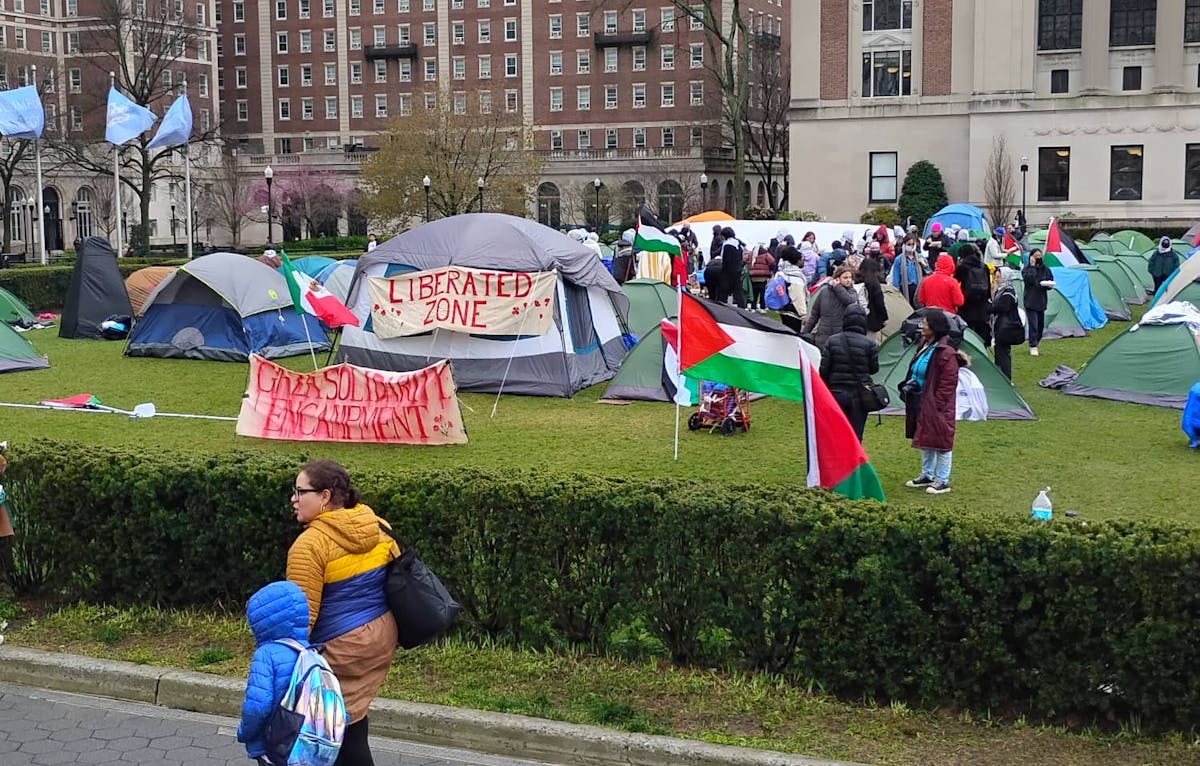Columbia Learns the Lesson of 1968
In a protest against Israel, mockery and violations of Columbia’s principles and statutes move the university’s courageous president to call in the cops.

Columbia’s decision to clear out the anti-Israel “occupation” of its campus on its second day suggests the school has heeded the lessons of the 1968 student rebellion that damaged its reputation for decades — do not give protesters a foothold. That was the error made by President Grayson Kirk, an erudite scholar who dithered for a week after protesters occupied campus buildings, and even his own office, before calling in the police.
When the NYPD finally cleared out the protesters, in some cases using force to expel resisting students, leading to dozens of injuries and hundreds of arrests, the public recoiled. It was a black eye for the school from which it took decades to recover. Did the current president, Nemat “Minouche” Shafik, learn from Kirk’s lesson? The fact that the university called in the NYPD this afternoon to clear the encampment suggests she did.
“The individuals who established the encampment violated a long list of rules and policies,” President Shafik wrote in a statement. “Through direct conversations and in writing, the university provided multiple notices of these violations, including a written warning at 7:15 p.m. on Wednesday notifying students who remained in the encampment as of 9:00 p.m. that they would face suspension pending investigation.”
As we write this, our scribe on the scene says that the gates to the Columbia campus at Morningside Heights are locked and manned by NYPD officers in riot gear, and only university affiliates can enter. Officers ordered the disbanding of the protest inside the so-called “liberated zone” on the campus’ East Lawn, where dozens of keffiyeh-clad students had set up scores of pup tents and showed no signs of budging. By mid-afternoon, the lawn was cleared. The situation could yet turn uglier.
The encampment was set up by a group called Columbia University Apartheid Divest, which calls for the school to end any financial ties with Israel. A little after noon, a rally got under way featuring chants to a martial drumbeat. “From the river to the sea, Palestine is almost free,” was one message. “We have an obligation to know where our money is going,” one student speaker added. She lamented the “harassment” of Palestinian Arab students.
“This university may not be our ally,” the protester said, “but its students are.” To cheers from a crowd, she exclaimed “We are all Palestinians” and “We run this campus.” In a nod to the 1968 protests, she spoke of “interlinked injustices” and the need to end “Columbia’s gentrification of Harlem.” She hailed the students who in 1968 “mobilized against the Vietnam War,” and the university’s move in 1985 to divest from apartheid South Africa.
“We cannot let this encampment fall,” was the message of another speaker, who added “let’s keep this energy going.” That appears to be precisely the concern that led Ms. Shafik to clear out the encampment. “These are steps that I deeply regret having to take,” she said in her statement, noting that “protests have a storied history at Columbia and are an essential component of free speech in America and on our campus.”
This might not be the end of the story. At Harvard in 1969, when student opponents of Free Vietnam occupied University Hall, another courageous president, Nathan Pusey, called the state and city police to clear the building. His own police department had opposed the move, and the faculty turned against him. In what we have long regarded as a tragic denouement, Pusey resigned in 1971. Let’s hope Columbia backs its president.
Ms. Shafik certainly put out a fine statement, saying that the decision to remove what the protesters described as the “Gaza Solidarity Encampment” reflected the need to “balance the rights of students to express political views” against what she called “the need to protect other students from rhetoric that amounts to harassment and discrimination.” In this regard, she may have nipped in the bud a debacle that could have been as damaging as the rioting in 1968.

